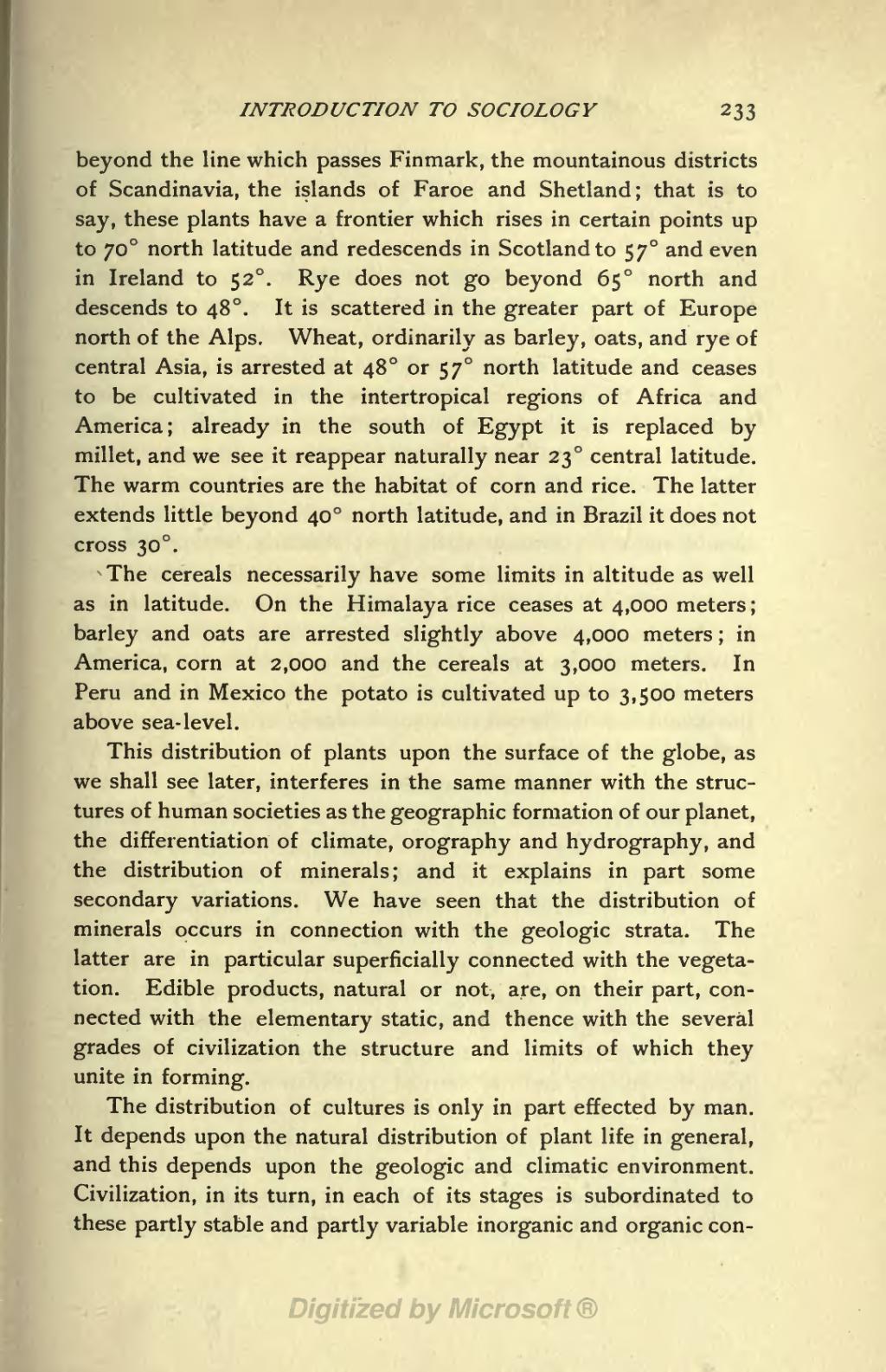INTRODUCTION TO SOCIOLOGY 233
beyond the line which passes Finmark, the mountainous districts of Scandinavia, the islands of Faroe and Shetland; that is to say, these plants have a frontier which rises in certain points up to 70 north latitude and redescends in Scotland to 57 and even in Ireland to 52. Rye does not go beyond 65 north and descends to 48. It is scattered in the greater part of Europe north of the Alps. Wheat, ordinarily as barley, oats, and rye of central Asia, is arrested at 48 or 57 north latitude and ceases to be cultivated in the intertropical regions of Africa and America; already in the south of Egypt it is replaced by millet, and we see it reappear naturally near 23 central latitude. The warm countries are the habitat of corn and rice. The latter extends little beyond 40 north latitude, and in Brazil it does not cross 30.
The cereals necessarily have some limits in altitude as well as in latitude. On the Himalaya rice ceases at 4,000 meters ; barley and oats are arrested slightly above 4,000 meters ; in America, corn at 2,000 and the cereals at 3,000 meters. In Peru and in Mexico the potato is cultivated up to 3,500 meters above sea-level.
This distribution of plants upon the surface of the globe, as we shall see later, interferes in the same manner with the struc- tures of human societies as the geographic formation of our planet, the differentiation of climate, orography and hydrography, and the distribution of minerals; and it explains in part some secondary variations. We have seen that the distribution of minerals occurs in connection with the geologic strata. The latter are in particular superficially connected with the vegeta- tion. Edible products, natural or not, are, on their part, con- nected with the elementary static, and thence with the several grades of civilization the structure and limits of which they unite in forming.
The distribution of cultures is only in part effected by man. It depends upon the natural distribution of plant life in general, and this depends upon the geologic and climatic environment. Civilization, in its turn, in each of its stages is subordinated to these partly stable and partly variable inorganic and organic con-
